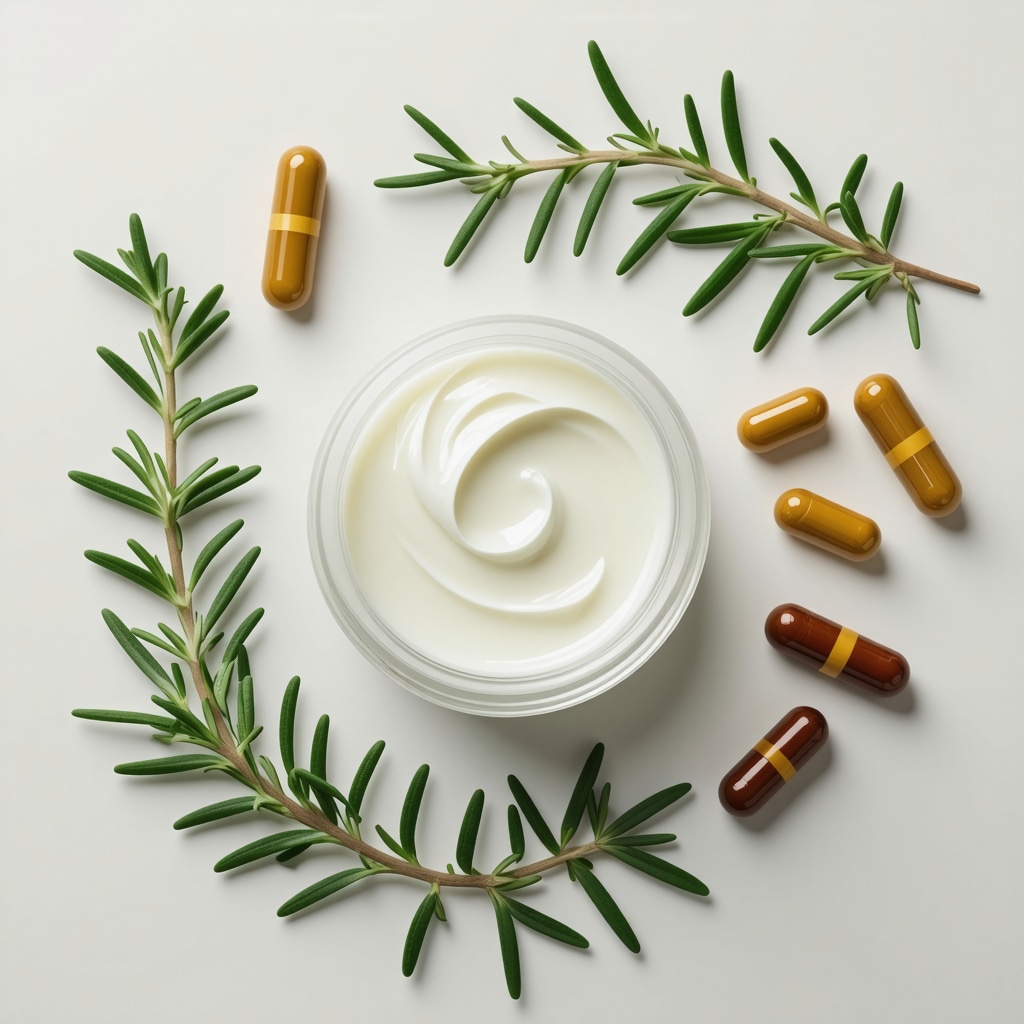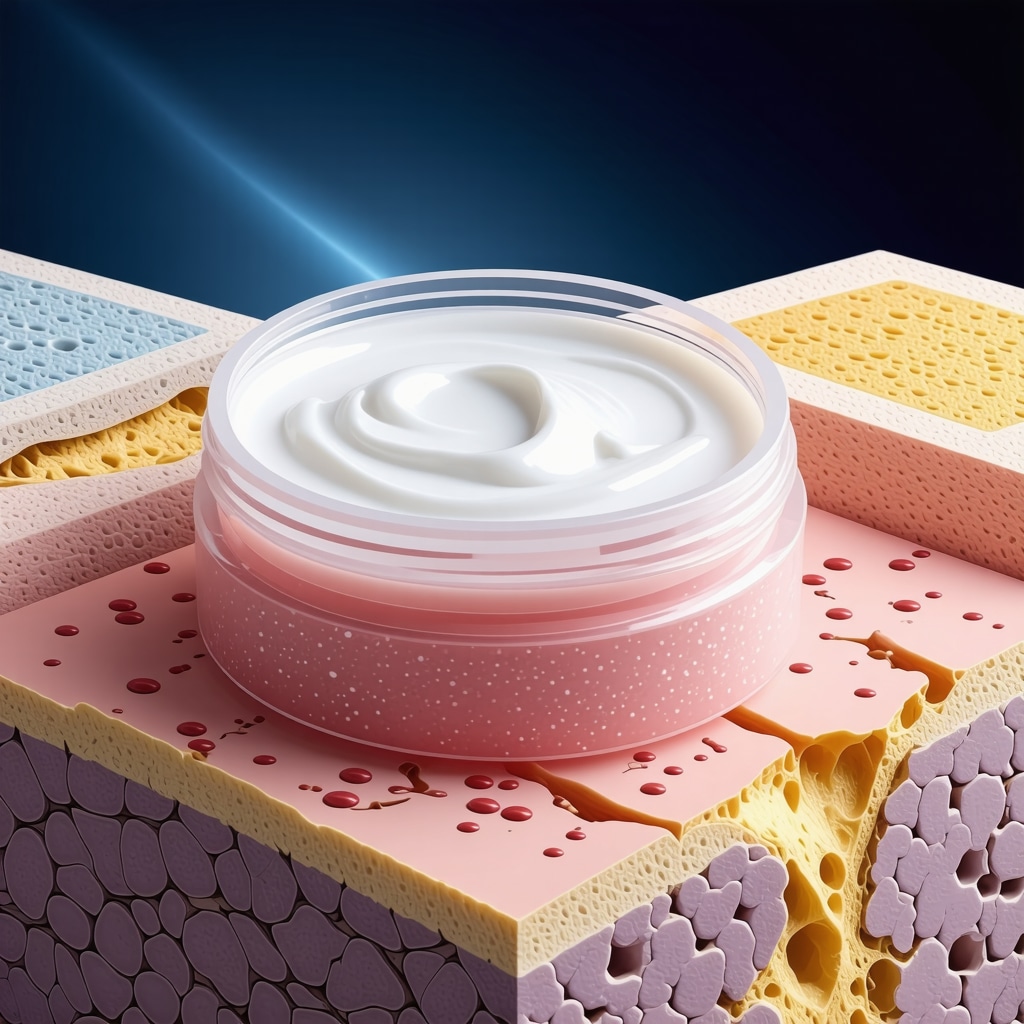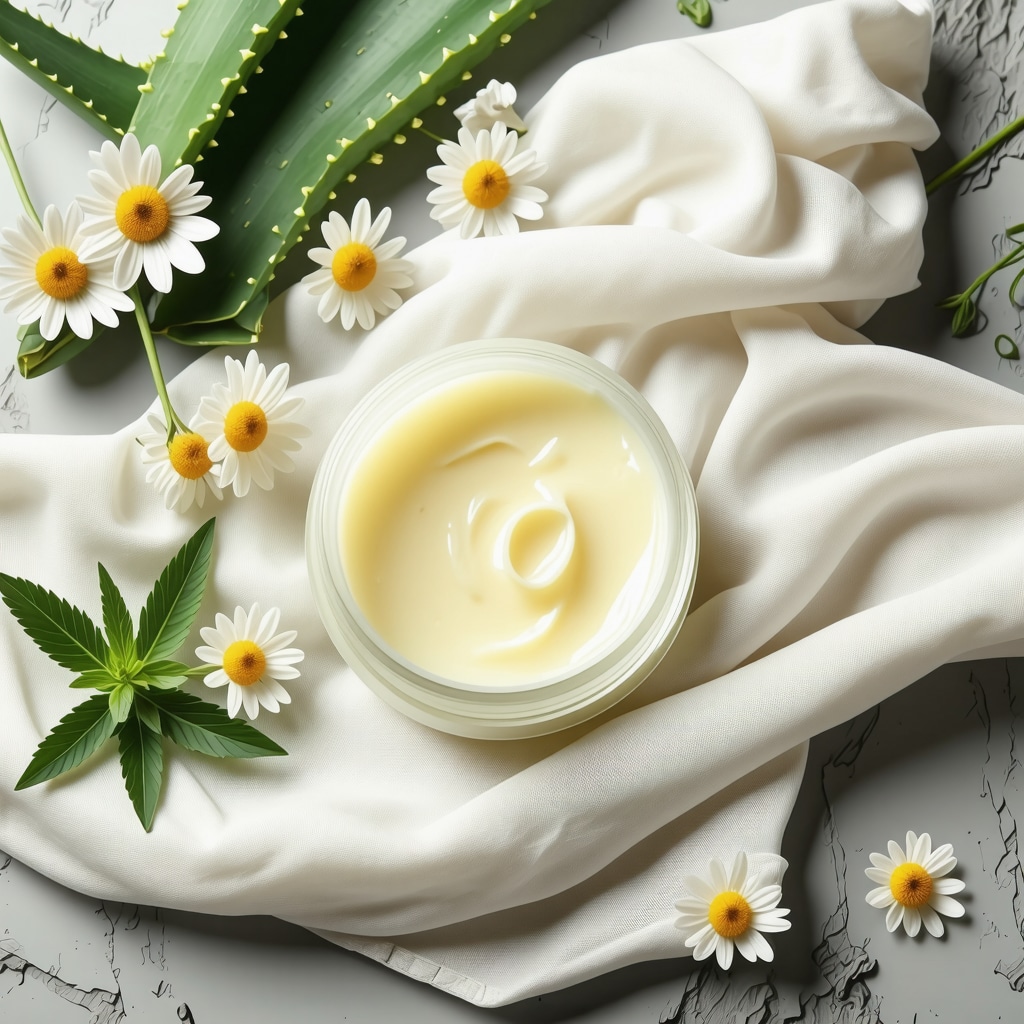Unscented Tallow Cream as a Therapeutic Moisturizer for Sensitive Skin
In the realm of dermatological care for sensitive skin, unscented tallow cream emerges as a compelling, natural alternative to synthetic moisturizers laden with fragrances and additives. Its biochemical composition — rich in saturated fats and essential fatty acids closely mimicking human sebum — offers a unique capacity to restore and maintain the skin’s lipid barrier with minimal risk of irritation or allergic reaction. This makes it an indispensable tool in sensitive skin management, especially for individuals prone to eczema, rosacea, or contact dermatitis.
Biochemical Synergy: Why Unscented Tallow Cream Outperforms Conventional Moisturizers
Unlike many commercial products that incorporate artificial fragrances and preservatives, unscented tallow cream provides a hypoallergenic profile that significantly reduces sensitization risks. The absence of added scents eliminates common triggers of skin inflammation, while the cream’s molecular structure facilitates deep epidermal absorption, promoting long-lasting hydration and cellular repair. Scientific studies have demonstrated that the fatty acid profile in grass-fed beef tallow contains conjugated linoleic acid and palmitoleic acid, both known for their anti-inflammatory and antimicrobial properties. This biochemical synergy highlights why unscented tallow cream is ideal for allergy-prone skin and sensitive dermal conditions.
How Does Unscented Tallow Cream Compare with Other Natural Moisturizers for Sensitive Skin?
In expert forums, a frequent inquiry concerns the comparative efficacy of unscented tallow cream versus plant-based moisturizers such as shea butter or aloe vera gels. While plant-based options offer diverse phytochemical benefits, their higher polyunsaturated fatty acid (PUFA) content can sometimes exacerbate oxidative stress on fragile skin. Conversely, the low PUFA concentration in tallow stabilizes the cream’s shelf life and reduces peroxidation, providing a more stable and less irritating moisturizing experience for sensitive skin types. This characteristic is underscored in dermatological discussions and can be explored further in detailed comparisons like Tallow vs Shea Butter: Which Moisturizer Wins for Sensitive Skin.
Advanced Application Strategies to Maximize Benefits of Unscented Tallow Cream
To harness the full therapeutic potential of unscented tallow cream, skincare professionals recommend application on damp skin to enhance occlusion and nutrient penetration. Layering techniques with serums rich in ceramides or hyaluronic acid can synergize with tallow’s lipid restoration, optimizing barrier repair and moisture retention. For in-depth guidance on maximizing efficacy, the article How to Use Tallow for Skin Care: Expert Application Tips 2024 offers comprehensive protocols based on clinical experience.
What Are the Long-Term Benefits and Potential Limitations of Unscented Tallow Cream in Sensitive Skin Regimens?
Longitudinal clinical observations indicate that consistent use of unscented tallow cream can significantly improve skin texture, reduce transepidermal water loss, and attenuate inflammatory flare-ups in sensitive skin. However, practitioners caution that individual variability in response necessitates patch testing, especially among patients with complex dermatological conditions. Additionally, sourcing ethical, grass-fed, and zero-additive formulations ensures purity and maximizes therapeutic outcomes, a consideration detailed in Why Zero Additive Tallow Products Are Better for Skin Care. Peer-reviewed dermatological journals, such as the Journal of Clinical and Aesthetic Dermatology, have documented the efficacy and safety profiles of animal fat-based moisturizers in sensitive skin contexts, lending authoritative support to these findings.
Explore Further and Contribute Your Expertise
For professionals seeking to deepen their understanding or share clinical experiences regarding unscented tallow creams, exploring specialized content such as Best Unscented Tallow Creams: Gentle Moisturizers Reviewed can provide valuable insights. Your expert contributions to community discussions enhance collective knowledge and advance sensitive skin care research.
Integrating Unscented Tallow Cream into Holistic Sensitive Skin Protocols
In clinical practice, the strategic incorporation of unscented tallow cream into multifaceted skincare regimens for sensitive skin enhances therapeutic efficacy beyond mere moisturization. Dermatologists emphasize combining tallow-based creams with gentle cleansing routines and barrier-supportive ingredients to create a synergistic environment conducive to skin regeneration. For instance, pairing unscented tallow cream with ceramide-rich serums or mineral-based sunscreens can fortify the skin’s resilience against environmental stressors, reducing flare-up frequency.
This integration aligns with findings from the Journal of Clinical and Aesthetic Dermatology, which underscores the importance of a holistic approach in managing sensitive skin conditions. Such protocols also advocate for avoidance of irritants commonly found in conventional products, reaffirming the value of zero-additive formulations documented in Why Zero Additive Tallow Products Are Better for Skin Care.
Addressing Common Myths: Does Unscented Tallow Cream Really Suit Acne-Prone and Oily Sensitive Skin?
A prevalent misconception is that animal fat-based moisturizers like unscented tallow cream exacerbate acne or oiliness, deterring users with such skin concerns. However, emerging dermatological evidence challenges this narrative. The fatty acid composition of tallow closely resembles human sebum, allowing it to balance sebum production rather than clog pores. Studies reveal that the inclusion of conjugated linoleic acid in tallow offers antimicrobial effects against Cutibacterium acnes, a key pathogen in acne development.
Moreover, the Does Tallow Clog Pores? Facts Every Skin Lover Should Know article provides an in-depth analysis based on dermatological assessments, highlighting how properly sourced, unscented tallow cream can be a safe and effective moisturizer for acne-prone and oily sensitive skin types.
How Can Customized Essential Oil Blends Enhance the Therapeutic Profile of Unscented Tallow Cream?
Expert formulators often explore the addition of select essential oils to unscented tallow cream to augment its anti-inflammatory, antimicrobial, and antioxidant properties without compromising its hypoallergenic nature. The choice of oils such as lavender, chamomile, or frankincense—known for their soothing profiles—can tailor the cream’s effects to specific dermatological needs.
However, caution is advised to avoid sensitization; thus, dilution ratios and patch testing are critical. For those interested in DIY formulations, DIY Tallow Cream Recipe with Essential Oils for Ultimate Hydration offers a scientifically grounded framework for safely incorporating essential oils into tallow-based moisturizers.
Expert Recommendations for Sourcing and Storing Unscented Tallow Cream
Ensuring the purity and efficacy of unscented tallow cream hinges on sourcing ethically produced, grass-fed tallow devoid of additives or synthetic preservatives. This practice not only guarantees superior nutrient profiles but also aligns with clean beauty principles, reducing exposure to potential irritants.
Storage conditions play a pivotal role in preserving product integrity; tallow creams should be kept in airtight containers away from heat and direct sunlight to prevent oxidation and rancidity. Detailed guidance on this topic can be found in How to Store Tallow Cream: Keep It Fresh and Effective.
We encourage readers and professionals alike to share their experiences or ask questions regarding unscented tallow cream in sensitive skin care by visiting our Contact Us page. Your insights contribute to advancing knowledge and optimizing care strategies within the skincare community.
Innovative Stabilization Methods to Enhance Unscented Tallow Cream’s Shelf Life and Potency
While unscented tallow cream inherently offers oxidative stability due to its low polyunsaturated fatty acid content, advanced formulation techniques can further prolong its efficacy and safety. Incorporation of natural antioxidants like tocopherols (Vitamin E) or rosemary extract has been shown to mitigate lipid peroxidation, thus preserving the cream’s therapeutic properties over extended storage periods. Careful balancing of these additives ensures maintenance of the hypoallergenic profile pivotal for sensitive skin applications.
Recent studies in cosmetic chemistry emphasize the role of microencapsulation technology to protect sensitive bioactive compounds within tallow creams, facilitating controlled release and enhancing skin bioavailability. Such innovations open avenues for next-generation tallow-based moisturizers tailored for individuals with heightened dermatological vulnerabilities.
Can Advanced Preservation Strategies in Unscented Tallow Cream Reduce Irritation While Extending Product Lifespan?
Indeed, integrating antioxidant systems and employing inert atmosphere packaging can significantly reduce oxidative degradation, a primary catalyst for irritation in sensitive skin users. By minimizing rancidity and maintaining fatty acid integrity, these preservation tactics help prevent inflammatory skin responses often associated with degraded lipid products.
For evidence-based insights, refer to the comprehensive review by ACS Journal of Agricultural and Food Chemistry, which elucidates antioxidant mechanisms in lipid-rich topical formulations, underscoring their relevance in sensitive skin care.
Synergistic Pairings: Leveraging Unscented Tallow Cream with Emerging Dermocosmetic Ingredients
Integrating unscented tallow cream with cutting-edge dermocosmetic actives like niacinamide, panthenol, and plant-derived ceramides can amplify barrier repair and anti-inflammatory effects. Niacinamide, for instance, enhances skin elasticity and modulates sebum production, complementing tallow’s lipid replenishment. Meanwhile, panthenol offers humectant and anti-pruritic benefits, reducing discomfort in sensitive or irritated skin.
Such combinations require meticulous formulation to maintain ingredient stability and avoid adverse interactions. Clinical practitioners advise incremental introduction to patient regimens coupled with rigorous monitoring to tailor therapy according to individual skin responses.
Decoding Consumer Queries: What Are the Risks and Benefits of Using Unscented Tallow Cream in Atopic Dermatitis Management?
Atopic dermatitis presents a complex therapeutic challenge marked by compromised barrier function and inflammation. Unscented tallow cream, with its sebum-like fatty acid profile, offers a promising emollient that can restore barrier lipids and reduce transepidermal water loss. However, its animal-derived nature may raise concerns regarding allergenicity or microbial contamination if improperly processed.
Dermatological consensus suggests that sourcing from reputable producers adhering to rigorous purification standards is critical to mitigate these risks. Furthermore, patch testing remains indispensable for sensitive individuals.
For a detailed discussion, the Annals of Dermatology offers peer-reviewed insights into lipid-based emollients in atopic dermatitis, highlighting the nuanced balance between efficacy and safety.
Emerging Trends: Biotechnological Advances in Sustainable Tallow Production for Sensitive Skin Applications
With increasing demand for ethically sourced and eco-conscious skincare, biotechnological innovations are revolutionizing tallow production. Cultured fat derived from bovine cells via cellular agriculture promises to deliver high-purity lipid matrices devoid of contaminants or environmental burdens associated with traditional animal farming.
This cutting-edge approach could ensure consistent supply of standardized unscented tallow cream ingredients optimized for sensitive skin formulations, aligning with both sustainability imperatives and dermatological safety.
Industry experts encourage stakeholders to monitor developments in this domain as it heralds a paradigm shift in natural moisturizer sourcing and formulation ethics.
Continuing the Conversation: Engage with Advanced Dermatological Insights and Collaborative Research
We invite skincare professionals, formulators, and researchers to explore these sophisticated facets of unscented tallow cream and contribute to evolving best practices. Sharing clinical outcomes, formulation experiences, and novel research findings enriches the collective expertise vital for advancing sensitive skin therapies.
Visit our Contact Us page to connect with the community and access exclusive content designed for expert-level discourse.

Revolutionizing Stability: Next-Generation Preservation Techniques for Unscented Tallow Cream
While unscented tallow cream inherently benefits from low polyunsaturated fatty acid content, augmenting its oxidative stability through innovative preservation methods is pivotal for extending shelf life and maintaining dermatological safety. Incorporation of natural antioxidants such as tocopherols (Vitamin E) and rosemary extract acts synergistically to inhibit lipid peroxidation, thereby preserving the bioactive fatty acids critical for barrier restoration in sensitive skin applications. Moreover, advanced microencapsulation technologies create protective matrices around sensitive lipids, ensuring controlled release and enhancing cutaneous bioavailability without compromising hypoallergenicity.
These sophisticated stabilization strategies not only prevent rancidity-related irritations but also maintain the cream’s therapeutic potency over prolonged storage, addressing a significant challenge in natural moisturizer formulation.
Can Advanced Preservation Strategies in Unscented Tallow Cream Reduce Irritation While Extending Product Lifespan?
Indeed, the integration of antioxidant systems coupled with inert atmosphere packaging has demonstrated notable efficacy in mitigating oxidative degradation, a primary factor leading to skin irritation in sensitive individuals. By preserving fatty acid integrity and preventing the formation of pro-inflammatory lipid peroxides, these approaches enhance patient tolerability and efficacy. For a comprehensive review of these mechanisms and their implications in topical lipid formulations, consult the ACS Journal of Agricultural and Food Chemistry.
Synergistic Combinations: Amplifying Therapeutic Outcomes with Dermocosmetic Actives
Integrating unscented tallow cream with emerging dermocosmetic ingredients such as niacinamide, panthenol, and plant-derived ceramides offers a multifaceted approach to sensitive skin care. Niacinamide enhances epidermal barrier function and modulates sebum production, complementing tallow’s lipid replenishment. Panthenol provides anti-pruritic and humectant effects, mitigating discomfort in irritated skin, while ceramides fortify the intercellular lipid matrix, optimizing moisture retention and resilience against environmental insults.
However, the formulation must carefully balance ingredient stability and avoid deleterious interactions. Gradual incorporation with clinical monitoring ensures personalized optimization of therapeutic regimens.
Exploring Biotechnological Innovations: Sustainable and Purity-Focused Tallow Sourcing
Recent advances in cellular agriculture are catalyzing a paradigm shift in tallow production, enabling the generation of cultured bovine fat with consistent lipid profiles and zero contaminants. This biotechnological leap not only aligns with sustainability and ethical sourcing imperatives but also facilitates precise customization of lipid matrices tailored for sensitive skin formulations.
Such innovations promise to resolve traditional concerns surrounding animal-derived products, including variability and microbial contamination, thereby enhancing safety and regulatory compliance in dermatological applications.
Engagement Invitation: Collaborate to Advance Sensitive Skin Therapeutics
We invite dermatologists, formulators, and research scientists specializing in sensitive skin care to contribute their clinical experiences, formulation breakthroughs, and research insights concerning unscented tallow cream. Collaborative discourse accelerates innovation and refines best practices in this niche dermatological domain.
Connect with our expert community and access advanced resources via our Contact Us page to elevate your practice and research endeavors.

Expert Insights & Advanced Considerations
Biochemical Compatibility Enhances Barrier Restoration
Unscented tallow cream’s fatty acid profile closely parallels human sebum, enabling superior integration with the skin’s natural lipid matrix. This biochemical compatibility facilitates rapid barrier repair and long-term hydration retention, essential for managing sensitive and compromised skin conditions.
Oxidative Stability is Pivotal for Sensitive Skin Tolerability
The low polyunsaturated fatty acid content in tallow inherently reduces oxidation risk; however, advanced preservation methods such as incorporation of natural antioxidants (e.g., tocopherols and rosemary extract) and microencapsulation technologies further extend product shelf life and minimize irritant formation, critical for maintaining therapeutic efficacy in sensitive skin regimens.
Strategic Synergistic Formulations Amplify Therapeutic Outcomes
Combining unscented tallow cream with dermocosmetic actives like niacinamide, panthenol, and ceramides can potentiate barrier fortification and anti-inflammatory effects. Formulation precision and patient-specific regimen customization are requisite to balance ingredient stability and optimize clinical benefits.
Emerging Biotechnological Advances Promise Sustainable and Purified Sources
Cellular agriculture innovations in cultured bovine fat production represent a transformative approach to sourcing tallow, ensuring consistent lipid composition, eliminating contaminants, and aligning with ethical sustainability goals — a promising frontier for sensitive skin dermatology.
Individualized Assessment Remains Integral to Clinical Success
Despite the compelling benefits of unscented tallow cream, patient-specific factors such as dermatological history, allergen sensitivities, and concurrent skin conditions necessitate rigorous patch testing and clinical monitoring to ensure optimal outcomes and safety.
Curated Expert Resources
- Journal of Clinical and Aesthetic Dermatology – Offers peer-reviewed studies documenting the efficacy and safety of lipid-based moisturizers including tallow in sensitive skin contexts, providing a scientific foundation for clinical application.
- ACS Journal of Agricultural and Food Chemistry – Delivers comprehensive reviews on antioxidant mechanisms in lipid-rich topical formulations, elucidating preservation strategies crucial for maintaining tallow cream stability and skin tolerability.
- Why Zero Additive Tallow Products Are Better for Skin Care – An authoritative resource emphasizing the importance of purity and additive-free formulations for minimizing irritation and maximizing therapeutic potential.
- How to Use Tallow for Skin Care: Expert Application Tips 2024 – Provides evidence-based protocols and layering strategies to optimize tallow cream efficacy in sensitive skin regimens.
- Grass-Fed Tallow Skincare: Unlocking Natural Glow in 2025 – Explores the benefits of ethically sourced grass-fed tallow, reinforcing sustainability and enhanced nutrient profiles beneficial for sensitive skin.
Final Expert Perspective
Unscented tallow cream stands as a scientifically grounded, naturally derived moisturizer uniquely suited for sensitive skin due to its biochemical harmony with human sebum, inherent oxidative stability, and adaptable formulation potential. Integrating advanced preservation techniques and synergistic actives further elevates its therapeutic profile, while biotechnological sourcing innovations promise a sustainable future. Clinicians and skincare professionals are encouraged to adopt a personalized, evidence-based approach to incorporate unscented tallow cream within comprehensive sensitive skin protocols.
For those seeking to deepen expertise or contribute to advancing sensitive skin therapeutics, engaging with specialized resources and collaborative discourse via our Contact Us page offers a gateway to cutting-edge knowledge and professional community exchange.

